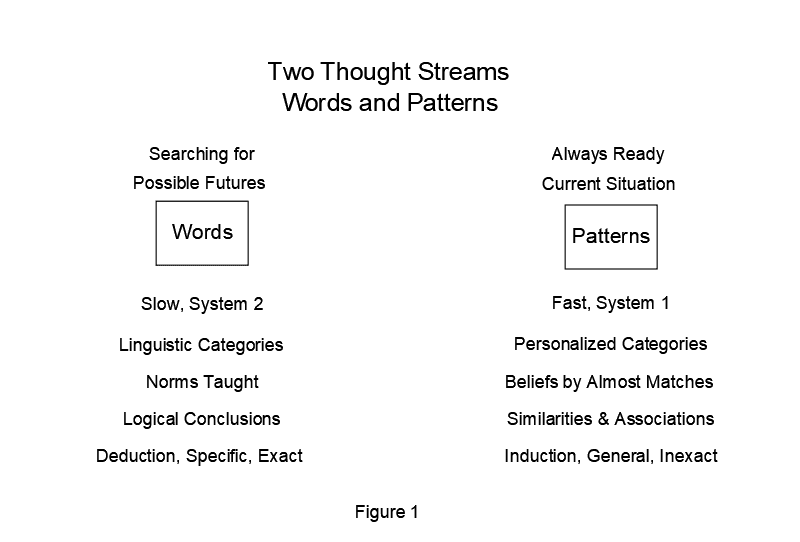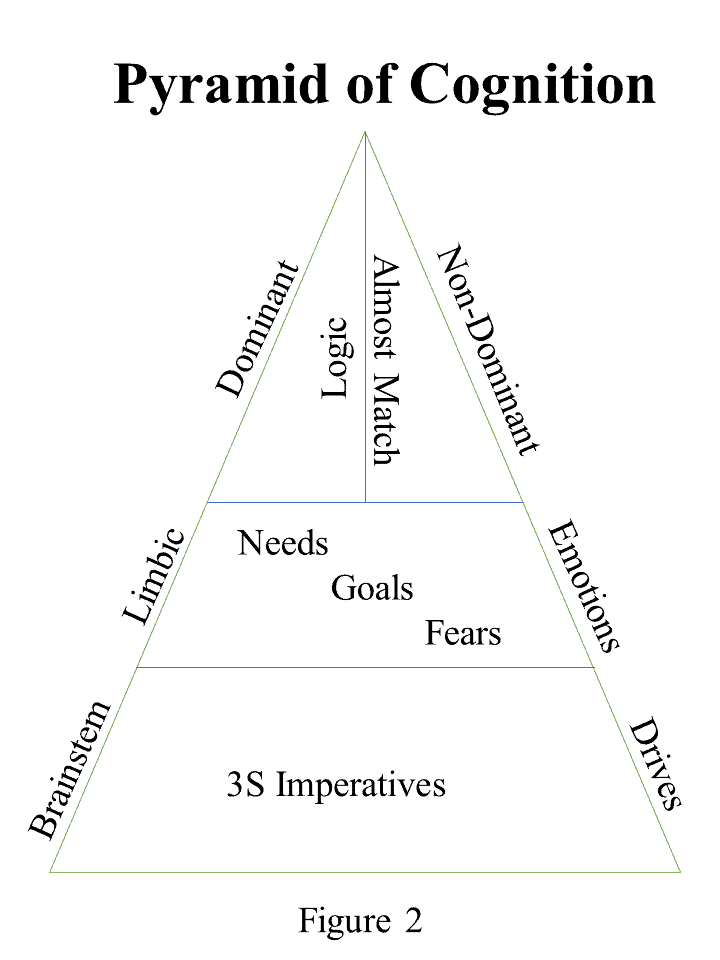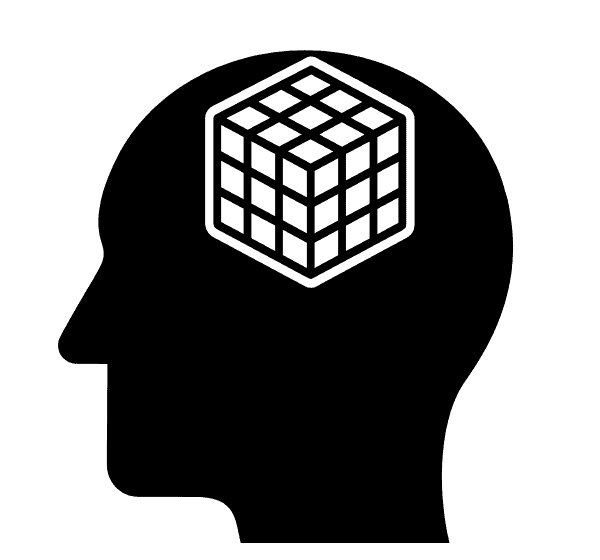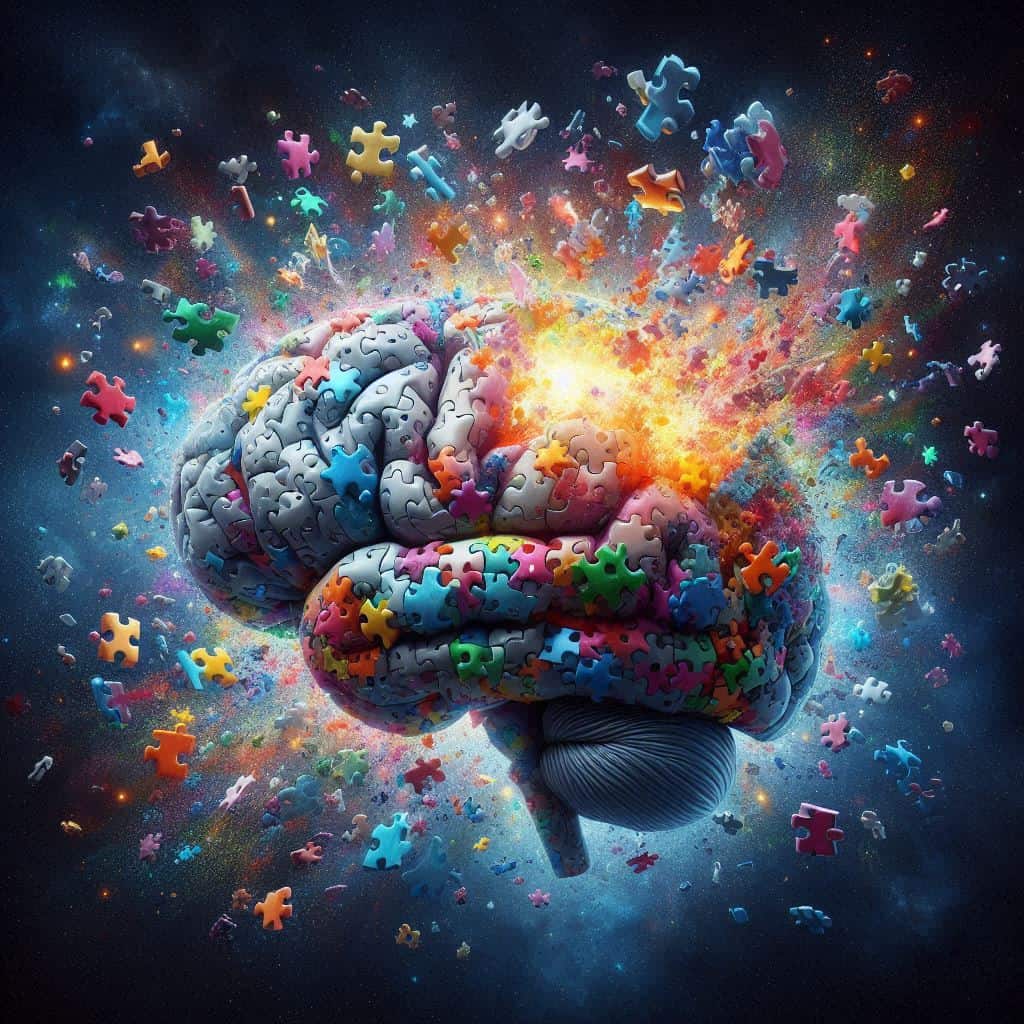Mentalese
Mentalese is the term used for the thoughts flowing through your mind, particularly conscious thoughts. What can we say about the form and characteristics of these thoughts?
Some people say they think in words. Others say they think in pictures.
Words
Almost all of us are familiar with internal dialogue where meaningful language fragments follow one another, often leading to decisions which we act on. We learned how to think like this from talking amongst our family and more formally in school, where we learn more about language and other subjects by verbal instruction.
Language-based thoughts are linked with logic. When we have sufficient facts, we can deduce consequences necessary to the decision confronting us.
Words and language provide us with a ready-made categorization of reality and its relationships. Therefore, our culture’s language strongly influences internal dialogue.
Pictures
For those who don’t think in pictures during the day, nighttime dreams, know that images can tell a story. Just as words need other words to make meaningful thoughts, pictures need other pictures to render thought. For example, if an image of your child driving in a car is followed by the memory of a news report of a car crash, that is a thought. A concerning thought.
Shared features link picture-based thoughts. The associative relationships arise not by formal training, but due to our genetic neural threshold. Neurons provide an almost match based on the number of shared features. Personal experiences determine what almost matches a person makes.
Consider this example. A current stock market chart may have points of similarity to previous stock market chart. A trader makes the almost match between the two charts and inductively assumes that the correspondence will continue. The association guides the purchase decision.
A more personal example. We easily recognize a friend dressed in an entirely new style. The number of shared features between their current look and our memory of the friend is sufficient for the almost match to occur.
Although pictures is the typical word used to describe these non-verbal thoughts, patterns is another useful term for almost matches. Patterns allow interpretations such as similarity and occurrence timing.
Together Words and Patterns
Mentalese is composed of both words and patterns; however, most people have developed a preference for either words or patterns. For example, the more schooled you are, the more likely you prefer words and the more creative you are, the more likely you prefer pictures or patterns.
Figure 1 highlights the differences between the two modes. Does either ring more true for you?

Dual Process Theory
Daniel Kahneman in his best-selling book, Thinking Fast and Slow labels the mentalese paths for us. Fast thinking relies on heuristics—short-cut rules which ignore complications yet provide usable answers. Kahneman presents a vast array of valuable examples, but he sticks to psychological explanations.
In Neural Almost Gate: How Neurons Shape Thoughts, I develop the neurological underpinning of almost matches as the basis for heuristics.
Slow thinking is verbal-based reasoning. It requires effort to logically parse through the various alternatives to whatever situation we find ourselves confronted with.
It is not unusual for a reaction to a situation to be promptly required. In that case, we cannot examine all the logical paths. Fortunately, our fast thinking is ready with a response, imperfect though it may be.
People Have Distinct Almost Match Requirements
Although we all share the pattern thought mode, the almost match is not identical across the population. Genetics determine an individual’s neural threshold. If a person has a high neural threshold, then many features must appear for two patterns to almost match, while a person with a low neural threshold will need fewer shared features to trigger an almost match.
Thus, a high barrier requires nearly identical features to recognize similarity, while a low barrier allows more variability in its almost match.
Preconscious Cortical Processing
Before thoughts reach the conscious arena in the prefrontal lobes, the sensory data flows through word categories in the verbal hemisphere and through personal patterns in the other hemisphere. The left-right brain has a crucial cross-hemisphere connection, the corpus callosum, that shares the verbal and patterns status at many stages of their processing. This allows comparison and change of either side to the best fit.
What happens after individual sensory information is enhanced and integrated? It spontaneously travels through neural paths that our memories once did, thus flavoring the connection between the current situation with our experience. The memory path also includes knowledge we have gained that helps us organize relationships between features of the current situation, which will be useful when we eventually consider our needs, desires, and fears.
Conscious Thoughts
When our current situation, enhanced by its flow through memories and knowledge, reaches the executive areas of the prefrontal lobe, we may have time to search for the best reaction to our situation. The verbal lobe, using working memory, will logically examine its facts, searching for the behavioral decision that will maximize the satisfaction of one’s needs and desires, while minimizing one’s fears. The pattern lobe, using working memory, will inductively process its highly personalized view of the situation and make adjustments. These adjustments can occur when the verbal lobe deduces additional facts, which it shares. If new inductive solutions arise, they too are shared back to the verbal lobe.
This back-and-forth can go on for an extended period. For example, weighing which of two medical schools to attend, a friend agonized for several months. Logic dictated one school. His personal patterns leaned to the other school. One week, the logic of the first school was overwhelming, but then his passion for community service pushed the second school into the first position. Over the summer, his tentative decision flipped many times. It wasn’t until the very last moment he finalized the difficult choice.
Keith Stanovich in Things that IQ Tests Miss: The Psychology of Rational Thought proffers a mechanism for the two systems to work together and generate a single response. This mechanism copies the active state of situational understanding to which it adds possible information (that is, it elevates some Almost Matches and treats them as facts). The logical facility of the verbal hemisphere deduces the best available result. At that point, the best solution between the deductive and the inductive paths is available for usage.
This is reminiscent of the scientific method, where an inductively generated hypothesis supplements known facts to logically demand a particular result must occur if the hypothesis is correct.
Emotions Role
Emotions and feelings give strength to our thoughts on both paths. However, emotions arise before the level of consciousness, so they are not directly a part of mentalese.
We recognize our emotions by the thoughts we have. We presume those thoughts are based on emotions. In that manner, we develop an indirect understanding of our emotions. We can’t change easily our emotions. We can only change the situations we find ourselves in and thereby, influence the hold emotions have on our decision-making and thus behavior.
In the Pyramid of Cognition (Figure 2) sensory data enters at the base of the brain with our biological 3S Imperatives (Satiety, Sex, Safety). These imperatives are hard-wired, not changeable. They feed up to the next layer—the limbic system, where emotions are formed and stored.
Emotions require large association areas for the various sensory information to be considered together. The brainstem does not provide that facility. With the emergence of primates (85-55 million years ago), the brain grew. Additional neurons provided the areas to combine the partially satisfied 3S Imperatives into emotions and feelings.
For instance, if a primate went to the best feeding area, other animals looking for a good meal would likely confront it. Satiety might be achieved, but safety was risked. Over time, the primate would relate the level of its hunger to the associated danger. If the combination of intense hunger despite acute danger lured the primate out, we might label that primate as fearless. If the combination was mild hunger despite extreme danger lured the primate, we might say that primate acted foolishly.
Of course, primates had no language. They had only their personal patterns, but we have language. We can examine our behaviors and label our emotions and feelings.
I am not saying emotions are unimportant, because of the lack of direct verbal knowledge of them. Emotions and feelings are very important. They color our conscious understanding of our situation and the relationships between the situation and meeting our needs and desires while avoid our fears. This information is fed to the top level of cognition.
The pyramid capstone is where mentalese occurs. As discussed above, the left lobe—verbal and logical—is based on words and deduction. The right lobe—pattern and almost match—relies on similarities and associations.

Mentalese is not solely verbal, nor solely pictorial. The two modes work together, although most people favor one mode over the other.
Which do you favor in your decision-making?
Additional Information
Two Types of Thinking Words with logic and patterns with similarity
Many Faces of Induction Intuition, insight, creativity, jumping to conclusions
Induction. Conscious Intuition Metaphors, jokes
Associations Close matches at higher levels of abstraction, which removes additional detail,
Corpus Callosum. Communication across the hemispheres as information proceeds as isolated sensations get arranged into complete situations
Creativity Examples in Science The hypothesis is an inductive guess which experiments confirm or deny
Reasoning: Association Plus Logic Induction and deduction working together in daily life
Triune and Dual Process Models of Thinking Paul MacLean’s three level brain merged with two levels of conscious thought
Mental Construction Model The Pyramid of Cognition
References
Hamill, Robert. Neural Almost Gate: How Neurons Shape Thought. Burning Thought Publications. 2022. ISBN 978-1-7332044-3-9
Kahneman, Daniel. Thinking Fast and Slow. Farrar, Straus and Giroux, 2011. ISBN 978-0-374-53355-7
Stanovich, Keith E. What Intelligence Tests Miss: The Psychology of Rational Thought. Yale University Press. 2009. ISBN 978-0-300-12385-2


